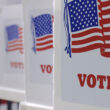The unofficial contest to become Donald Trump’s running mate has underscored the enduring Republican plot to overturn elections. At the beginning of this election year, Rep. Elise Stefanik, of New York, chair of the House Republican conference, stated that she would not agree to certifying the results of the 2024 election unless she considered them “legal and valid.” Senator J.D. Vance, of Ohio, then raised her bid to Trump to a new level of pandering, saying if he had been Vice President in 2020 he would have ordered swing state legislatures to send Congress “multiple slates of electors,” enabling them to “[fight] over it from there.”
On January 30, a pro-Trump state legislator in Arizona, Anthony Kern, went to the heart of the matter, filing a bill that expressly specifies that state legislators, not the state’s voters, have the ultimate right to appoint presidential electors.
This is not supposed to be happening. The Electoral Count Reform Act (ECRA), which was adopted by a bipartisan vote of Congress on December 29, 2022, was intended to prevent overturning the popular results of a presidential election by the state legislatures.
The ECRA narrowed the ability of members of Congress to object to the certification of electoral votes to two grounds – either that the electors have not been lawfully certified in the state under state law, or that “the vote of one or more electors has not been regularly given.” These two phrases have legislative and legal histories that confine these exceptions to cases where the certifications have not followed the procedures required by applicable state law. But even the updated language of the ECRA may not have solved the problem of what happens when one party is determined to challenge the outcome of a Presidential election.
Before, during, and since the January 6 insurrection, many Republicans in Congress attempted to broaden the grounds for rejecting state certifications to encompass Trump’s false claims that the Biden electoral votes were invalid due to “fraud.” Given what happened then, there are no guarantees that in 2024 determined partisans will limit their objections to the historical parameters of the two exceptions mentioned above–or that the courts will take action to force Congressional certifications of electoral votes that members of Congress claim to be unlawful.
Even before the issue gets to the Congress, blocking the recognition of a Biden Presidential victory in 2024 could be undertaken not only by a losing candidate seeking judicial remedies, as Trump did in his flailing array of failed legal cases in 2020. It could also be undertaken by renegade state legislatures certifying Trump electors as legitimate, as suggested by Senator Vance, irrespective of the language enacted in the ECRA that is intended to curb such behavior. That language plainly states that the certificates issued by the state’s executive – typically the governor under state law – listing the winning electors are “conclusive” for Congress, unless a court has, with finality, directed otherwise. A court might object, for example, to a rogue certification by a rogue governor.
But the risk remains that state officials could refuse to certify anyone as a winner. County election officials in Michigan refused to certify Presidential election results in 2020 in response to Trump’s demands, before backing off under pressure by other officials and the voters. There were similar refusals to certify election results by Republican election officials in other races in 2022 in Arizona, Nevada, New Mexico, North Carolina and Pennsylvania, often on such evidence-free grounds as a “gut feeling.” Reviewing the statutes from state to state, there are many opportunities for renegade or faithless electors to exploit loopholes in state law to cast their electoral vote for someone else.
And, even if courts have ordered state officials to certify an election, so that every state has one valid certification of electoral count votes, there’s still the risk that a majority of members of Congress could decide to ignore the ECRA, refuse to certify a winner and thereby move the selection of a President to the House. That action would be subject to immediate legal challenge. Here the greatest risk is that the Supreme Court would interpret the ECRA as granting members of Congress greater rights than the 12th Amendment provides, which is merely being witnesses to the opening and counting of electoral vote certificates. For example, the court could find that Congress has authority to throw out any state certificates that it finds to be issued improperly and invalid, under procedures now spelled out in detail in the ECRA. Or it could decide that such a decision is a “nonjusticiable political question” that is beyond the competence of the judiciary to second-guess.
All of this would be contrary to established Constitutional doctrine. Constitutional scholars have long documented that Article 2, Section 1 of the Constitution as modified by the 12th Amendment grants the states, not federal legislators, the sole role in determining certifications of the electoral votes for each state, and have criticized language in the original pre-2022 Electoral Count Act (ECA) allowing members of Congress to object to particular certifications. Indeed, some argue that if the ECRA is unconstitutional, it is in purporting to grant federal legislators any authority to determine the results of a Presidential election, rather than only to be present to witness the counting.
But imagine a situation in which Congressional Republicans unite in objecting to specific electoral votes as invalid, and demand they be thrown out. In such a case, would the Supreme Court hold firm to the notion that the text of the Constitution precludes Congress from having the right to object to certifications of electoral votes? Or would the Court find text in the Constitution and/or ECRA to let the House decide?
A bad decision on the 12th Amendment and the ECRA from the Supreme Court that enables state electoral count certificates to be thrown out and the Presidential election sent for resolution to the House is not the only risk. As recently pointed out in a detailed analysis by Mark Medish and Joel McCleary in this publication, not all of the ECRA’s provisions are self-executing. Despite the ECRA, a Trump-dominated House of Representatives may have multiple tools to delay or prevent the certification of any President other than Trump. And a Democratic-controlled House of Representatives may have tools of its own to prevent Trump’s certification. It could, for example, find Trump to be ineligible to receive any certifications whatsoever, due to his being an insurrectionist barred by the Fourteenth Amendment. This would present a much knottier legal and political problem for a Supreme Court that appears to be ready to overrule Colorado’s current finding that Trump as an insurrectionist is ineligible under its laws to be President.
There continues to be the separate threat that a “No Labels” or other third party candidacy wins a few electoral votes, legitimately preventing either Biden or Trump from getting to a majority of 270. Currently, the No Labels entity is on the ballot in 13 states and working to get on the ballot in 14 others. In a murky and undemocratic process unreflective of a normal political party, No Labels has yet to decide who its nominees for President and Vice President might be. (Senator Joe Manchin, considered an early prospect, declined last week to be a candidate, saying he had no desire to be merely a “spoiler.”)
Regardless, the No Labels strategy is to force a contingent election in the House under the 12th Amendment, where in theory it could leverage even a few electoral votes into an imagined outcome in which its nominee is chosen as the only viable option, given the impasse created by the irreconcilable hatred Republicans have for a second Biden Presidency, and the same feelings Democrats hold for a second Trump term. But this scenario does not take into account the actual situation in the House under the 12th Amendment.
Under the 12th Amendment, it takes only a majority of state delegations in the House to elect a president in a contingent election: Wyoming. Alaska, and Vermont each get one vote, just as do California, New York, and Texas. The vote of each state is awarded to the candidate of the party that controls a majority of the congressional districts in that state. Whichever candidate gets a majority of states becomes president. The two parties today are not equal when it comes to the partisan composition of the House. Republicans dominate the lower-population states, and currently have a 26 state to 22 state advantage over the Democrats in the House, with Minnesota and North Carolina each tied.
And as the group United to Protect Democracy has pointed out, the two largest states, California and Texas, which have a combined 21% of the US population and 17% of the votes in the Electoral College, would have only 4% of the votes in a contingent election (two states out of 50).
The 26 smallest states, Alabama, Alaska, Arkansa, Connecticut, Delaware, Hawaii Idaho, Iowa, Kansas, Kentucky, Louisiana, Maine, Mississippi, Montana, Nebraska, Nevada, New Hampshire, New Mexico, North Dakota, Oklahoma, Oregon, Rhode Island, South Carolina, South Dakota, Utah, Vermont, West Virginia, and Wyoming, which also have a combined 21% of the US population and 28% of the votes in the Electoral College, would control 56% of the votes under the rules of a contingent election in the House. The legitimacy of any President who derives their authority from this calculus after losing the popular vote, and not winning an electoral majority, would be profoundly questioned.
For 2024, partisan control of a contingent election is heavily stacked against the Democrats. Even if the Democrats secured a blow-out victory and retook the House of Representatives as a whole by re-capturing multiple seats they lost in 2020 and 2022 in such states as California and New York, it would be practically impossible for them to get a majority of the House delegations in at least 25 out of 50 states, which they would need for their nominee to win a contingent election.
In North Carolina, recent partisan gerrymandering has inspired the retirement of three Democratic incumbent members of Congress after they concluded the new Republican partisan advantage made their races hopeless. The chances of North Carolina remaining tied, as opposed to becoming a state with a Republican majority, is functionally zero. So, in the House, for contingent election purposes, the Democrats begin with a deficit of states, at 27-22-1.
In a strong Democratic year in which Trump’s popularity is threatened by such mega-factors as criminal convictions or voters who decide they’ve had enough of his chaos, there are three states which could in theory swing from red to blue. But they are mostly long-shots.
Minnesota’s current four-to-four Congressional delegation could swing blue and its composition could become five to three if the Minnesota 8th District votes for Democratic challenger Jen Schultz instead of Republican incumbent Peter Stauber. The Minnesota 8th swung strongly for Democratic Senator Amy Klobucher in 2018, despite voting for Trump by 15 points over Clinton in 2016 and Biden in 2020 – the same margin it gave Stauber over Schultz. Stauber has embraced Trump and Trumpism, entwining their political futures there. But a Stauber loss of a red seat to his blue challenger is not currently seen as likely.
Arizona, currently five-to-three Republican, has two vulnerable Republican members of Congress, David Schweikert in Arizona’s 1st, and Juan Ciscomani in Arizona’s 6th. Their districts have a slight Republican advantage and at this point are considered toss-up races by Congressional political analyst Charlie Cook.
North Dakota has just one Congressional seat, and is one of the most Trump-leaning states. But that seat is open, as Congressman Kelly Armstrong runs for governor. The Democratic candidate, Trygve Hammer, a Marine and Naval veteran who served in Iraq and describes himself as “pro-union, pro-choice, and pro-democracy” is a long-shot, given the state’s current twenty-plus Republican partisan leaning.
There is one Republican state with two Congressional seats, Montana, that could move to a tie if one of its current Congressman were to lose. That would be the ethics-challenged Ryan Zinke in Montana’s 1st District, who faces a rematch against Democrat Monica Tranel after a below-50-percent victory against her in 2022.
Assuming the Democrats run the table in these four states, and maintain their advantage in all states where they currently enjoy majorities, it is possible they could achieve a 25-24-1 advantage over the R’s for the purposes of calculating the outcome of a 12th Amendment contingent election vote. If they took three out of four, they could possibly achieve a 24-24-2 tie, making a contingent election even more head-spinning and uncertain.
Conversely, there are other Democratic majority House delegations in 2024 that are vulnerable to blue to red switch-overs: for example the Democrats could lose a seat in Michigan (currently 7 D, 6 R); their advantage in Pennsylvania is also razor-thin (currently 9-8), as well as in Virginia (currently 6-5). There is also the possibility of losing a seat in New Hampshire, where the current Democratic advantage (2 D, 0 R) would convert to a tie. Democrats also face the possible risk of losing Alaska’s sole member of Congress, Mary Peltola, who is seen as potentially vulnerable.
In sum, the Democrats need every imaginable break to avoid disaster in a contingent election. It is hard to imagine they will pull the inside straight. Or that Republicans, having pledged their fealty to Trump, would abandon him to a No Labels candidate if the Republicans continued to hold a partisan majority of the 50 state delegations in Congress.
To strengthen their hand against whatever Trump and his co-conspirators may cook up, Democrats need first to ensure that Biden wins a healthy majority (not merely plurality) of the popular vote, by minimizing protest votes for the three third party challengers Cornell West, Robert F. Kennedy, Jr., and any No Labels candidate. Those seeking to prevent a manipulated (as opposed to legitimate) win by Trump need also to prevent any third-party candidate from securing any electoral votes, and to make certain that no faithless elector votes for a third candidate who could force the election to be thrown into the House.
The Democrats must also win back the House by enough seats in 2024 to secure a sufficiently comfortable majority there, to prevent such stunts as the Republicans declaring they still hold the majority of House seats because they have refused to seat Democrats in close races. Norm-busting Republicans would have ample motivation to pursue such a course, to make it possible for example for a Republican Speaker to try to overturn the Presidential election results (see Medish and McCleary).
Lawyers and judges will also need to help states enforce their own election laws, so that every state certifies the actual winner of the popular vote under the rules in place prior to the election. The 2023 Supreme Court ruling in Moore v. Harper says that states retain the right of judicial review of decisions made by the legislatures, rejecting in this regard the Independent State Legislature theory. But a careful reading of that case – in particular the dissent issued by Justice Thomas – suggests that the dangerous notion that state legislatures could issue their own certifications of electoral votes to supplant those issued by a governor, while weakened, is not necessarily dead.
As a hedge against the risk of a contingent election going haywire, Democrats need to focus their efforts not just on winning as many of the six purple swing states as possible (Arizona, Georgia, Michigan, Nevada, Pennsylvania and Wisconsin), but also to seek victories in what might normally be nationally unimportant congressional elections to reduce the incentive (and the opportunity) for Trump and his acolytes to seek to push the Presidential elections into the House.
We do not yet know how the DC Federal District Court will rule on charges that Trump conspired to defraud the United States, conspired to disenfranchise voters, and conspired to obstruct an official proceeding as set forth in the criminal indictment brought against him by Special Counsel Jack Smith.
Nor do we yet know if any of Trump’s other remaining criminal cases will actually go to trial before the looming November 5, 2024 Trump-Biden Presidential rematch.
But we can know with certainty that if there were to be a contingent election to be decided by the House of Representatives in January 2025, the passions aroused by the January 6, 2021 insurrection would be amplified by orders of magnitude from what Americans witnessed when Trump and his allies tried to prevent the peaceful transition of power to his democratically elected successor.
As the inscription on the base of the statue representing “Future” at the National Archives Building reminds us, “What Is Past Is Prologue.”
Jonathan M. Winer is a former U.S. Deputy Assistant Secretary of State for International Law Enforcement







0 Comments